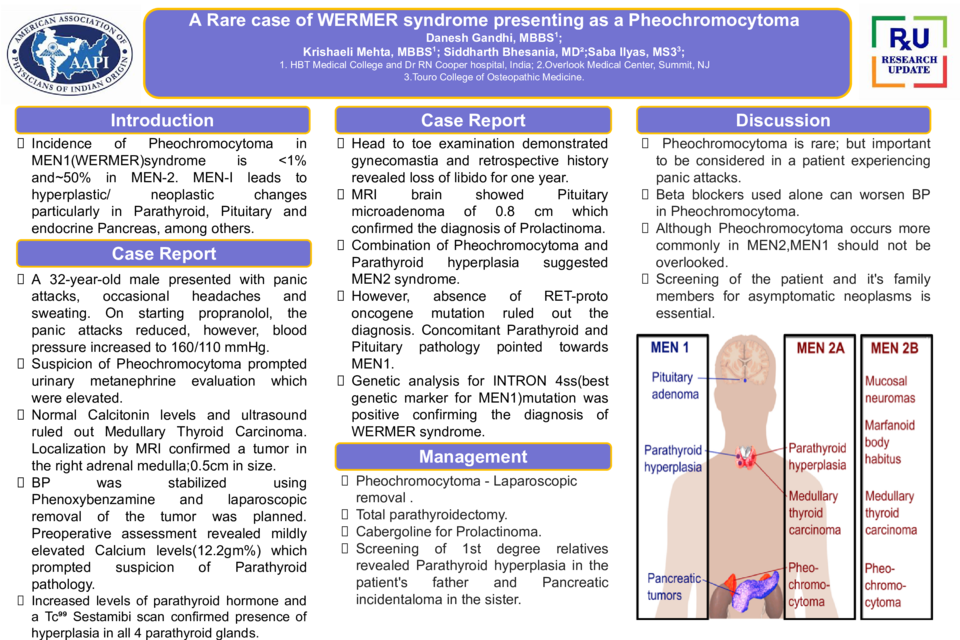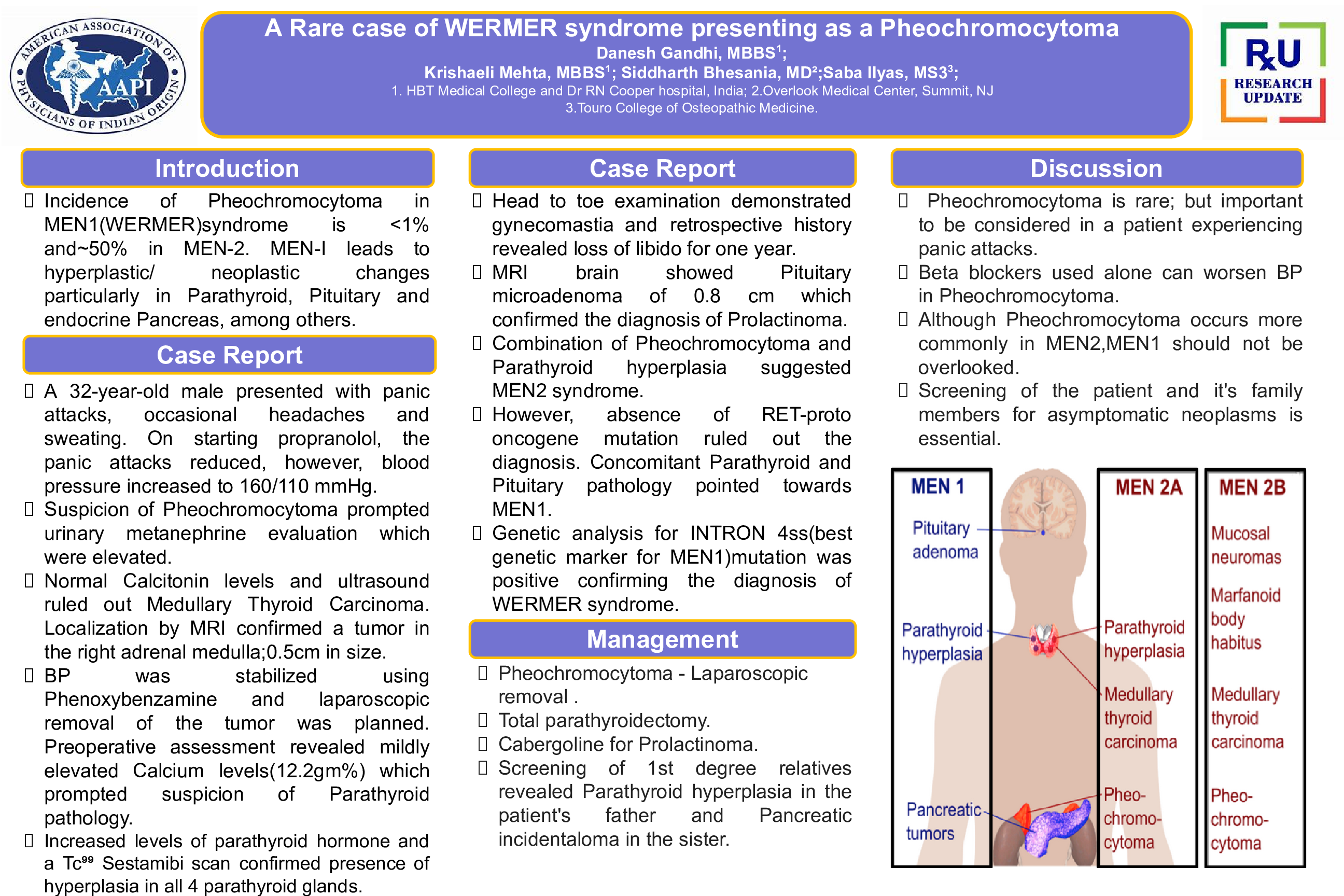Abstract
Background
MEN 1 (“Wermer” syndrome) is characterised by tumours particularly involving the “3P’s”- Parathyroid, Pituitary and the exocrine Pancreas. The prevalence of this disease is about 2 per 1,00,000 population. Of these, <1% present with a Pheochromocytoma making the case under discussion extremely rare.
Presentation
A 32 year old male presented with complaints of recurrent panic attacks, occasional headaches and sweating. Relevant history and examination yielded no significant findings. Baseline BP was 130/90mm Hg. A local practioner started him on Tablet Propranolol 40mg OD. 7 days later, the patient visits the hospital with complaints of increased frequency of headaches after starting the medication. Panic attacks however reduced. BP was now 160/110 mmHg. Careful Head to toe examination was significant for gynaecomastia. Retrospective history revealed a decreased libido since 1 year. Rest of the general and physical examination was unremarkable.
Differential Diagnosis
- Panic disorder
- Hyperthyroidism
- Pheochromocytoma
- Diabetes Mellitus
- Hypoglycaemia
- Arrthymias
- Essential hypertension
- Carcinoid tumour
- Anaemia
Investigations
Calcium: 12.2 mg/dl, Phosphate: 2.0 mg/dl, PTH: elevated, Calcitonin: WNL, Blood sugars, thyroid hormones normal, Metanephrines: Elevated, 5HIAA: normal
Radiology
- USG neck: normal thyroid architecture with enlarged parathyroids
- Tc99 Sestamibi scan: Hyperplasia in all 4 parathyroid glands
- MRI brain: Pituitary micro adenoma 0.8cm in size
- MIBG scan: tumour arising from right adrenal medulla 0.5cm in size
- PET CT: no evidence of metastasis.
Genetic Analysis:
RET proto-oncogene negative, intron 4ss(best genetic marker for MEN1) positive.
Diagnosis
A Combination of Pheochromocytoma and Parathyroid hyperplasia suggested MEN2 syndrome. However, absence of RET-proto oncogene mutation ruled out the diagnosis. Concomitant Parathyroid and Pituitary pathology pointed towards MEN1. Genetic analysis for INTRON 4ss(best marker for MEN1)mutation was positive confirming the diagnosis of WERMER syndrome.
Management
- Laparoscopic removal of Pheochromocytoma after stabilisation of BP using Phenoxybenzamine
- Total Parathyroidectomy.
- Cabergoline for Prolactinoma.
Discussion/Conclusion
The case wonderfully depicts how an innocuous symptom of anxiety eventually leads to the diagnosis of this rare syndrome. Hence, one should never overlook the differential diagnosis for panic attacks. Suspicion of Pheochromocytoma first arose with a rise of BP following beta blocker therapy, as worsening of hypertension occurs due to unopposed alpha action. Urinary metanephrines and MIBG scan further confirmed the diagnosis Laparoscopic removal of the tumour was initially planned and routine pre-operative screening revealed a deranged calcium profile consistent with hyper parathyroidism. Investigations ruled out medullary thyroid carcinoma. However, chasing the gynaecomastia lead us to the prolactinoma eventually clinching the diagnosis of MEN1 by genetic analysis. Early diagnosis of before metastasis is crucial to ensure better survival in not only the patient but also its family members. Screening for Men1 neoplasms in the 1st degree relatives revealed parathyroid hyperplasia in the farther and pancreatic incidentaloma in the patient’s sister, both of which were managed appropriately.






